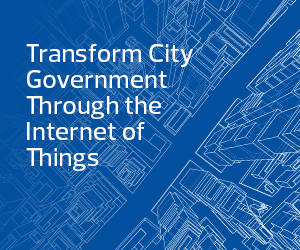The Benefits of Breaking Down IT and OT Silos
IT and OT teams have operated within their silos for as long as anyone reading this can remember. While IT focuses on data, information management and maintaining a high level of reliability, OT is concerned with systems that directly impact physical items and would rather not mess with technology that has run just fine for many years.
The benefits derived from combining these two very different but equally important disciplines are numerous and notable. For instance, with the combined power of IT and OT, cities will be able to gain real-time visibility into everything from traffic patterns to water consumption, environmental data and more. They can use this information to make process improvements to intersections and building construction, for example, and to implement projects that will directly and positively impact citizens’ daily lives.
DISCOVER: It’s crucial to balance speed and practicality at the network’s edge.
Cybersecurity Is a Double-Edge Sword
Converging the disciplines of IT and OT can also help keep cities safe from cyberattacks. Smart devices have become a favorite conduit of bad actors who have used the technology to launch attacks on critical infrastructure. IT can provide OT systems with updated patches to mitigate risk.
Unfortunately, cybersecurity concerns are partially responsible for the gulf that exists between IT and OT. OT administrators are concerned that a cybersecurity attack on the IT network could infect their systems. Their fears are not unfounded, as evidenced by the rise in cyberattacks on OT systems since the COVID-19 pandemic.
Air gapping OT networks has helped in the past, but attackers have become savvy enough to overcome that measure.
Fortunately, approaches such as network microsegmentation and zero trust can successfully protect devices. These practices have made the reward of converging IT and OT greater than the risk.
LEARN MORE: Passwordless authentication can support zero trust.
IT/OT Convergence Requires a Cultural Reset for Cities
Convergence can’t be based on technology and best practices alone, however. A cultural reset is equally important.
IT and OT administrators are built differently. They have divergent goals and objectives. They use proprietary tools to run their technologies. They use different terms. They don’t quite understand what the other does or why they do it.
Getting these teams to work together starts with helping them understand what each team does and showing them the benefits of convergence. This takes creativity. For example, because hands-on training is often the best form of education, agencies should arrange a day or two when IT and OT engineers swap jobs. This will allow teams to immerse themselves in the others’ specialty and demonstrate the benefits gained by combining resources.
EXPLORE: Protect operational technologies in smart cities.
Everyone Should Work Under a Common Governance Model
Agencies should support their newly combined IT/OT units with a governance model that encourages collaboration and a common set of tools. In the same way that agencies adopted combined tools and resources for DevSecOps, IT and OT engineers will share tools and ideas to achieve the singular objective of leveraging smart technologies to improve city operations. New technologies will no longer be for IT or OT, but for everyone. IT and OT will act as a single unit.
Likewise, the combined team can leverage existing cybersecurity guidance and frameworks, such as those published by the National Institute of Standards and Technology and the federal Cybersecurity and Infrastructure Security Agency. They can supplement these useful guidelines with tools such as data diodes for unidirectional data transfer and data clean rooms to aggregate data in a controlled environment. In the process, they’ll create cybersecurity strategies that ensure all of their solutions — from the network and data center to smart traffic signals and smart lighting — are well defended.
DIVE DEEPER: Strong cyber resilience is essential to organizational success.
The schism that exists between IT and OT teams was created in a world where smart devices didn’t exist. Now, those devices are everywhere. They’re getting more intelligent every day, collecting valuable data that cities can use to improve citizens’ lives — but only if cities can successfully bring IT and OT together.
Fortunately, many of the concerns IT and OT teams might have over combining the disciplines can be overcome. Through common processes and the right combination of tools and education, cities can successfully converge IT and OT and make the most of their smart technology investments.











